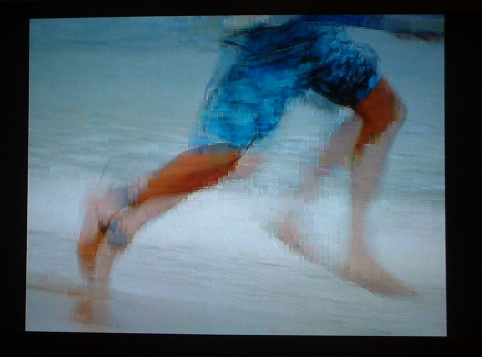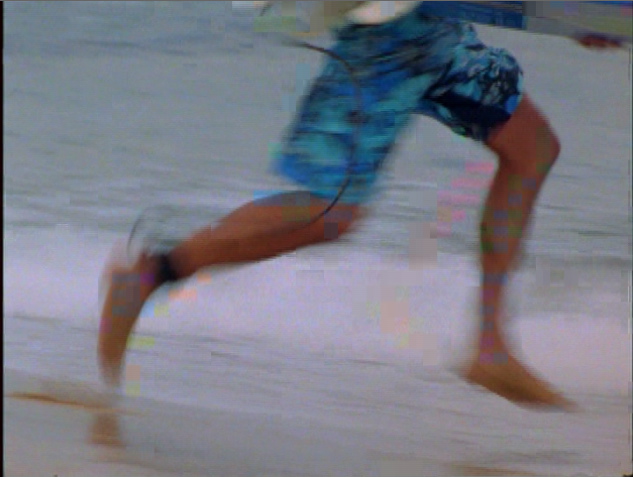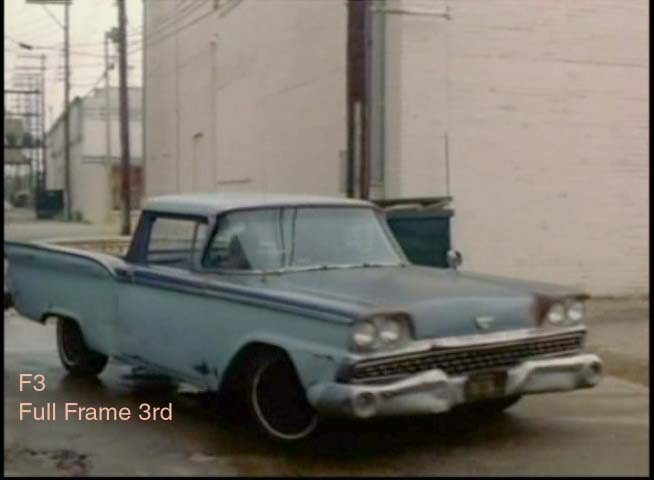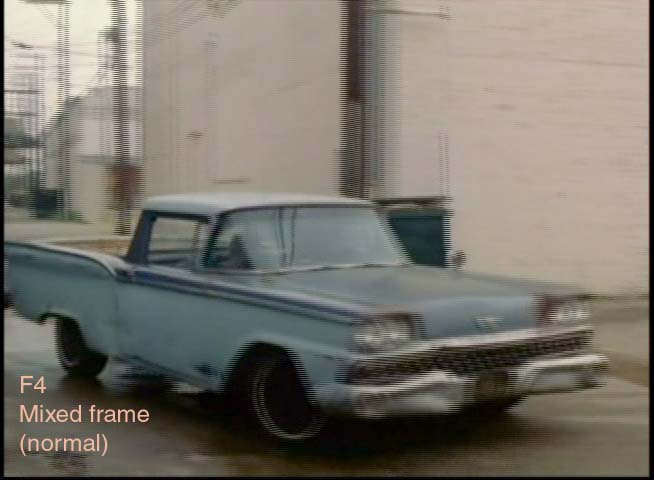I'm gearing up to buy my first HDTV, and I'm particularly eyeing the Sony KDFE50A10 50" LCD. None of the stores that I shop will let me test my own disk to see how it looks, so I ask the experienced folks here this question.
How are the TVs made today doing with removing 3:2 pulldown? I have one movie that was shot on film, but edited on video, and intermixed with 29.97 video footage. So while the entire movie is encoded 29.97, the bulk of it is telecined 24 fps film. This means that any 3:2 cadence will jump at the cuts. If a TV is designed to remove this pulldown, does it do it dynamically frame to frame? Or does it settle into a cadence and then take a bit to "catch up" if it gets off?
Conversely, I'm concerned that if I disable the 3:2 pulldown on the TV, that watching material progressively will look mushy. Can TVs today show 480i material as 480i?
In addition, I still have some older DVDs that were hard-letterboxed and encoded 4:3, so I'll have to zoom into them to get 16:9. If I'm connected to the DVD player with the component cables, how terrible does this look?
+ Reply to Thread
Results 1 to 20 of 20
-
-
I would think (don't quote me) that it depends..
If the source has flags that the unit understands, as part of the elecontrics,
( for instance, if your source is MPEG-2 ) then the unit will utilize it and
produce the best picture setup. But, if the source has no flags, then it is
my best guess that it (tv) will output via 54.94 fields, or something line that.
I see it the same way I see Hardware MPEG capture devices. They don't have
any de-Telecine in them. They just capture the fields and merge them into
frames accordingly. Its easier to deal with then trying to de-Telecine a
source that has been edited after the Telecine. In short, you can't IVTC
a source (hardware or software) if there are no proper and consistant patterns
to work off of. You can barely do it via software, like with AVIsynth scripts,
but it is not a true IVTC. Blending frames is not the same thing. Not when
the source's original Telecine (3:2 pattern) was in tact, but then was edited
afterwards, and then captured as edited (broken 3:2 pattern everywheres) and
then run through a software (or hardware) IVTC machanism.
I've been hoping for such a thing for haredware capture deivces, but came to
the conclusion (the reasons) you just read above.
But, as an option, if you know your source is a clean Telecine, then these
capture devices *should* incorporate a machanism to turn it on/off at will.
To date, I have not heard of any.
-vhelp 3946 -
Well, I know in the case of the Sony KDFE50A10, the 3:2 removal is a "feature", and that it can be turned off. How it actually accomplishes the removal, I don't know.
I also know that the 29.97 movie I mentioned has no flags embedded. It couldn't, since there is a section that is pure 29.97 video (not from a film source). And I've separately on another occasion tried to remove the pulldown on a demuxed film section, and proved that the 3:2 cadence is not consistent (changes at every cut). So if anyone has any insight on the Sony HDTVs, that would be useful. -
The latter. The more you look for dectection errors the more you will see, but these cadence detectors are getting better and faster all the time. Premium sets like the Wega will do well with 1080i and clean 480i telecined material. Expect to see more cadence hunting or even errors with VHS and OTA NTSC sources. Few others will notice.Originally Posted by StoryDonut
As for DVD, you will probably be using a progressive player and will need to rely on its IVTC or deinterlace for 29.97fps material. Try 480i out of the DVD player and see if the Wega processor does any better with interlace sources.
Not a LCD. Similar to a computer monitor screen, 480i needs to be hardware deinterlaced for the always progressive LCD display. This is where the images will show deinterlacing artifacts especially at SD resolutions. VHS and NTSC will be the poorest performers, 1080i will look much better.Originally Posted by StoryDonut
You will see that difference, others probably won't notice. You can zoom in either the DVD player or HDTV. See which looks better to you.Originally Posted by StoryDonut
All in all, that set will look great with HDTV and DVD. VHS and analog NTSC will have the worse treatment that you will notice with a 50" blow up. The real issue is going to be the quality of your local cable system. A recent 750MHz upgrade will show far less cable originated compression artifacts on the cable MPeg2 SD channels. Older systems and DBS will show unpleasant artifacts at that screen size. -
I'm in luck here, because I ditched cable years ago, and have no reason to go back. Netflix solved that problem.Originally Posted by edDV
-
Here is the Sony promotional description of the WEGA processor IVTC and upscaling modes. There are probably more technical descriptions floating around the web.
http://www.sonystyle.ca/commerce/servlet/StaticView?storeId=10001&catalogId=10001&cont....shtml#menutop -
I hope you will be getting OTA HDTV as well.Originally Posted by StoryDonut
-
Some clarification:Originally Posted by edDV
I did go ahead and buy this TV. (Since the original post, the price dropped about $500. I took that as a sign.) I've had it for less than a day (and really loving it so far), but I've had a chance to find an answer to my original question.
Playing it side by side with another Sony 4:3 NTSC tube TV, and feeding both of them the same signal from my DVD player (component into the HDTV, standard RCA video into the 4:3), I made this observation. On the film in question, I paused at a flickering frame. With the Wega's DRC setting set to High Density, the Wega's frame flickers also. It wasn't as pronounced as it was on the 4:3 tube, but it was definitely flickering.
What this tells me is that the Wega LCD display will show 480i material as 480i at this setting. Which means that I don't need to worry about 3:2 pulldown removal on this DVD. I can disable it, and the DVD still plays great. DRC's other settings are Progressive and Off, which implies that if it's not set to Progressive, then it must be interlaced. -
Hi-
What this tells me is that the Wega LCD display will show 480i material as 480i at this setting.
You have a progressive display. It only plays progressive frames. It can't play fields (unless perhaps they're bobbed). If you're ouputting 480i from the player, the TV is making it progressive one way or another. And it's also scaling it. -
Fair enough. But what is the 29.97 interlace flickering that I'm seeing? And what does "bobbed" mean?
-
see here first to get the terminology.
http://en.wikipedia.org/wiki/Deinterlacing
If you input flicker to a deinterlacer you will probably get flicker out the other end. It depends what is flickering. Flicker results from insuffficient frame rate. Anything under 50 Hz will have serious flicker. 48-50Hz takes some getting used to.
Show us a sample frame. -
Not sure if this will work, or whether it will make sense. It obviously won't flicker in this image, but on the TV, whether it's my HDTV or my NTSC tube, the legs are definitely strobing between the two interlaced film frames, at the same apparent 59.94 rate.

-
Here's the same frame screen grabbed off my computer screen (Apple'a "DVD Player"). The image on my computer monitor does not flicker.

-
What is the source of this video? is it a film or normal interlaced video?
The first frame shows the result of "blend" deinterlace in which two fields offset in time by 1/29.97 sec are averaged. When there is motion going on, you will get this double vision effect.
You get something similar for telecined film sources on the frames that mix fields from differnt time samples as in this example.
Full film frame @29.97fps

Mixed Film frame @29.97fps Note image is doubled, but each field is clean.

Ref: http://www.dvdfile.com/news/special_report/production_a_z/3_2_pulldown.htm
Your image looks more like blend deinterlace (averaged). -
I assume you are in a stop frame of you wouldn't notice this. Your NTSC TV is showing the two fields at once @ 59.94 fields/s rate. The HDTV is doing a "line double" (see wiki ref above) and doing the same thing at 59.94 frames/s rate.Originally Posted by StoryDonut
-
And does it flicker when you output 480p from the player and then pause the TV? I never see any flickering at all when pausing my Samsung DLP, but I send 720p from my DVD player.
Bobbing is a method of deinterlacing where you take a field and interpolate it into a full frame. There are good bobbers and bad bobbers. A straight interpolation loses half the resolution and causes jaggies/aliasing/shimmering. A good motion adaptive deinterlacer, such as that provided by the faroudja chipset, will leave static portions of the frame at full resolution by weaving the static portions of the fields together, interpolate the motion areas, but also smooth them to remove the aliasing, so it looks pretty darn natural. In the AviSynth world, motion adaptive deinterlacers are considered to be bobbers, and are called smart bobbers. They are considered as a completely different kind of deinterlacer in the video world, I think. I have no idea what your Sony does, but it's probably some kind of motion adaptive deinterlacing. -
Sony has licenced the Faroudja patents (and others) and have implemented them in their Wega image processing hardware but they do a poor job of explaining their mode controls. You have to wade through their marketing speak to understand their tech.Originally Posted by manono
They describe their enhanced smart bob (line double) as having even greater sensitivity for LCD ...
"One of the main elements of Sony’s WEGA Engine™ is the Panel Driver IC, which reduces motion blur thanks to an improved response time in mid-range brightness. The result is smooth movement of on-screen images. It incorporates a 14-bit panel driver for enhanced reality and depth in picture dimension, delivering crisper and brighter images."
Sony, give us a break and tell us what you are really doing! There may be some white papers burried somewhere on the web that better explains the "Wega engine" operational modes. Their manuals tend to be even more obscure and only give application hints.
Even with the evasiveness, these hardware deinterlacing technologies far exceed simple PC software deinterlacing algorithms and the realtime hardware is getting better all the time. I advise keeping interlace material as interlace (not talking about film here*) and let the current and future hardware handle deinterlacing for display. Hardware deinterlacing will continue to improve. Software deinterlacing is locked to current technology cannot be reversed.
*film telecine can be reversed with current software technology depending on the quality of the source. -
And so will sofware..I advise keeping interlace material as interlace (not talking about film here*) and let the current and future hardware handle deinterlacing for display. Hardware deinterlacing will continue to improve..

Both Hardware and Software have no magic.. but rather is unique, according
the implementation (algorithem) design. Hardware can be upgraded, but so
can sofware. And, the only difference between the two, there are none.. for
both consist of instructions. I realize that you are speaking in terms
of actual hardware tv devices. But, you gotta admit, you did throw in a
punch at sofware for no reason.
-vhelp 3980 -
But, you gotta admit, you did throw in a punch at sofware for no reason.
Hehe. Maybe because I had mentioned AviSynth deinterlacers. I do have to admit that the Faroudja deinterlacing of my DVD player and of my DLP TV set is better than anything I can do in software at the moment. However, I also believe that a good AviSynth deinterlacer is better than many of the deinterlacers found in many DVD players and HDTVs. But I'm with you, vhelp, in believing improvements are being made all the time, and there's no practical reason why software deinterlacers can't catch up with, and even surpass, hardware deinterlacers, since software solutions don't have to perform in real time. -
I'm sorry but you missed my point on software. It is true that software deinterlacing and encoding will improve. In fact, whatever algorithms exist in hardware today were first tested in software. But processing time and patent issues prevent that level of performance on a current PC, even with long processing times. Keep in mind that most hardware solutions are realtime.Originally Posted by vhelp
My main point on software deinterlacing is that it is a one way trip unless you separately save the original interlace file for the future. For example, you can divx, xvid, wmv or h.264 your family DV camcorder tapes to your hearts content but don't erase the DV masters. Keep the best clips entact for future encoders.
Once you software deinterlace, you are freezing your clip in current technology and it can't be recovered. Future advances in algorithms and processor speed won't restore or improve what you did in 2006.
Hardware image processing at the consumer level is in the early stages. Just look at the advances in DVD/DVR recorders and HDTV sets in the past two years. Project that forward 5-10-20 years. At the lowest end there will be competition for CPU only techniques (e.g. MPeg2 decoding will move to software) but advanced modes (e.g. MPeg4 h.264/VC-1 encoding) will require hardware assist for best performance.
Similar Threads
-
Watermark removal
By Shrimpy72 in forum ffmpegX general discussionReplies: 3Last Post: 14th Jan 2011, 12:31 -
advanced (2:3:3:2) pulldown removal
By socalver in forum Newbie / General discussionsReplies: 6Last Post: 17th Aug 2009, 22:15 -
Panasonic DV codec - removal?
By terrypin in forum Newbie / General discussionsReplies: 6Last Post: 11th Jun 2009, 07:19 -
WMP CP removal
By kookie2000 in forum AudioReplies: 2Last Post: 14th Jan 2008, 17:41




 Quote
Quote